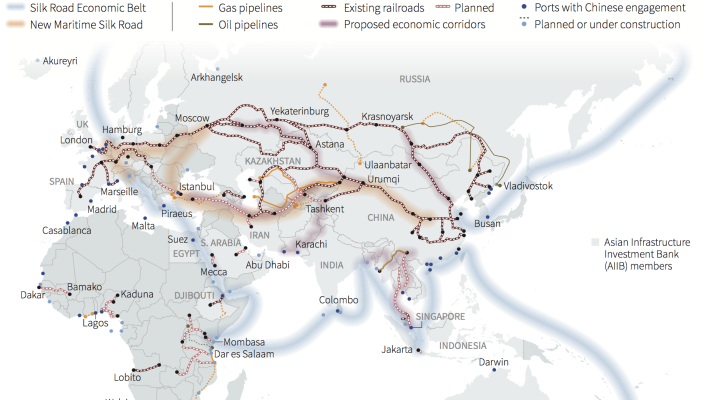Freight Forwarder Insights
Huin International Logistics Latest Articles
Essential Information for Comprehending the Belt and Road Initiative
Historical parallels to the Belt and Road Initiative (BRI) must be equally nebulous and ambitious. Perhaps the concept of “the West” is the closest analogy, particularly in how a metaphor transforms into an epoch-defining phenomenon. Should the BRI succeed, its name is likely to become shorthand for new geopolitical and economic arrangements, much like how "the West" signifies the current global order.
So, what will the post-Belt and Road world look like? At the inaugural Belt and Road summit in 2017, Xi Jinping declared it the "project of the century." If the initiative proceeds as planned, it will reshape the global economic and political landscape, potentially reinstating China at the center of international networks.
New infrastructure will be an immediate and visible metric of success. Over the next two to three decades, some BRI projects may stand as pinnacles of human ingenuity and engineering prowess. For instance, a bridge spanning the Caspian Sea could streamline road transport between Europe and China, altering traditional mental maps that separate continents. Similarly, the Kra Isthmus Canal in Thailand might facilitate smoother maritime connections between the Indian and Pacific Oceans.
Yet, infrastructure is merely a means to an end. The transformative potential of the geographic space in question hinges on connectivity, which in turn will stimulate economic activity. Industrial parks along these infrastructure routes will gradually integrate, forming regional value chains that support China's rise as a technological powerhouse.
Envision a future marked by advances in artificial intelligence, robotics, genetic engineering, and space exploration. As the BRI expands, its futuristic aspirations will grow clearer. Imagine self-driving vehicles traversing land, sea, and air, and trillions of connected devices powered by a network of China-centered satellites. Chinese enterprises are already eyeing deep-space ventures, such as orbital solar power stations and asteroid mining. One or more technological breakthroughs—akin to a modern Sputnik moment—could ultimately signify the BRI's success.
The Belt and Road may never achieve universal dominance—much like the West—but its influence will be palpable in various parts of the world. In certain regions, it may even operate unchallenged, with varying degrees of influence elsewhere.
To comprehend the core of this emerging Chinese-centric world order, one must identify its defining characteristics. Many of these traits are already apparent even in the BRI's nascent phase.
The initiative often emphasizes virtues like dependence, generosity, gratitude, respect, and reciprocity among nations, showcasing a multilayered and complex network of relationships. Ritual and history are also integral; nations are better understood as intersecting narratives, with power defined by the ability to steer these stories.
Even during its early stages, the BRI is an exercise in the obscure mechanics of power. There exists a public doctrine and a hidden practice—where deals are often made without written records, and hierarchies resemble security-clearance levels. Much like a sacred text, the BRI is revealed incrementally over decades.
This emerging world will be characterized by rapid change, traditional morality, and clandestine communication—a realm of soothsayers, saints, and spooks.
Of course, the BRI may never fully achieve its ambitious goals. It could face insurmountable obstacles, causing its objectives to drift out of reach. Success or failure, however, must be assessed against these lofty goals.
The new world envisaged by the BRI is not one where merely a piece on the geopolitical chessboard is replaced, nor where the pieces are merely rearranged. Rather, it envisions a world built afresh by fundamentally different actors guided by fundamentally different ideas.
Bruno Maçães, author of "The Dawn of Eurasia," has recently published his new book, "Belt and Road: A Chinese World Order," on December 6.
